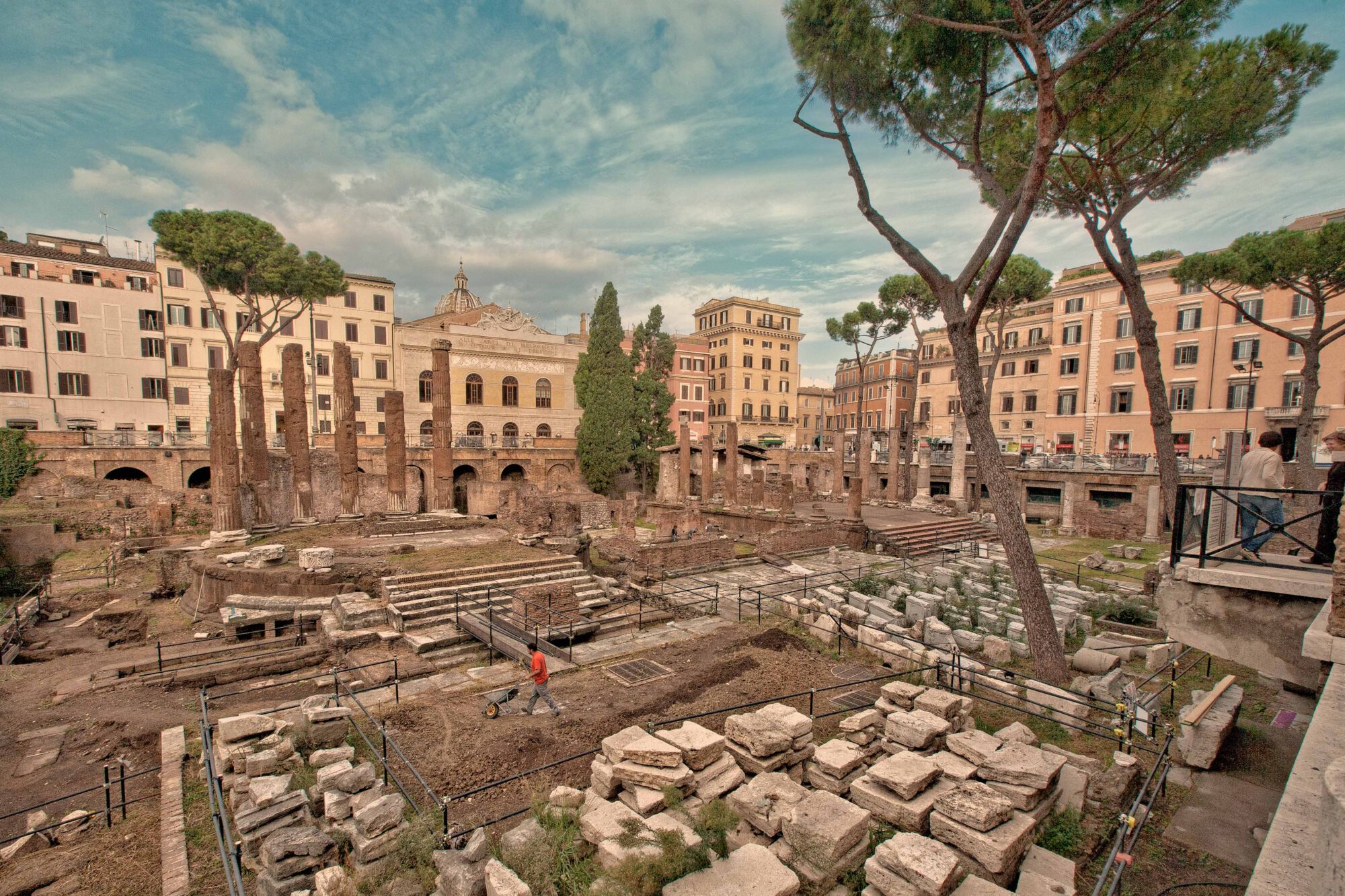 It is a reconstruction of an old Etruscan road: Via Cassia. Its path crossed the regions of Latium and Tuscia, connecting Rome (Roma) via Sienna (Colonia Saena Iulia) to Florence (Colonia Florentia). The first Roman roads were primitive, made of trodden earth and pebbles. Etruscans, by contrast, had paved roads as early as 400 B.C.. As with so many of their former master’s achievements, Romans adopted the art of roadbuilding and brought it to perfection. Rome, once capital of the Roman Empire, is full of Roman traces. And cats. Felidae tracks lead all the way back to ancient Rome. As Emperor Augustus expanded the Roman Empire, more and more furry four-legged felines found their way to Rome. They were used to keep corn-stores free of rats and mice, replacing ferrets for that purpose. The more vain “street tigers” have made their home among the ancient columns of “Largo Argentina”, that date back to the 3rd and 4th century. There they enjoy the attentions of tourists keen to take their photograph. Amongst the cats and Roman ruins, film maker Jeremy J.P. Fekete meets ex-opera singer Silvia Viviani. Today she’s known as a “gattara” because her heart belongs to the cats.
It is a reconstruction of an old Etruscan road: Via Cassia. Its path crossed the regions of Latium and Tuscia, connecting Rome (Roma) via Sienna (Colonia Saena Iulia) to Florence (Colonia Florentia). The first Roman roads were primitive, made of trodden earth and pebbles. Etruscans, by contrast, had paved roads as early as 400 B.C.. As with so many of their former master’s achievements, Romans adopted the art of roadbuilding and brought it to perfection. Rome, once capital of the Roman Empire, is full of Roman traces. And cats. Felidae tracks lead all the way back to ancient Rome. As Emperor Augustus expanded the Roman Empire, more and more furry four-legged felines found their way to Rome. They were used to keep corn-stores free of rats and mice, replacing ferrets for that purpose. The more vain “street tigers” have made their home among the ancient columns of “Largo Argentina”, that date back to the 3rd and 4th century. There they enjoy the attentions of tourists keen to take their photograph. Amongst the cats and Roman ruins, film maker Jeremy J.P. Fekete meets ex-opera singer Silvia Viviani. Today she’s known as a “gattara” because her heart belongs to the cats.
Further north of Rome lies Blera. Once an important Etruscan city, during the 3rd century B.C. the territory became part of the Roman Empire. Romans built Via Clodia here, an extension of Via Cassia, through which Blera was connected to Rome and other important places in the Empire. Not far away, “butteri” – the last of the Italian cowboys – still ride over the hills and plains of central Italy. Only a few dozen of them remain to pursue a 500 year-old tradition. They sit firmly in the saddle, experienced herders of Maremmana cattle, yet their occupation is on the verge of dying out.
A little way away from Via Cassia – Montegabbiano. It is said that Saint Francis of Assissi lived here in 1218, that he built a hut out of “scarsa” (a moorland plant that gave the city of Scarzuola its name), and founded a convent. Today Scarzuola is a rather unusaul place. It was rebuilt by Milanese architect Tomaso Buzzi, who bought the convent complex in 1957, to become the “ideal city”. On his death in 1980, Buzzi left the stone structure incomplete with instructions to let nature take its course. Buzzi’s nephew Marco Solari has taken the helm and continues to build.
At the end of the journey lies Florence. Named after the Roman flower goddess Flora, it was founded by Julius Caesar as a colony for Roman war veterans. There followed a forum, theatre and thermal baths. The colony became a city, but it wasn’t until Rome’s bloom had faded that Florence truly blossomed.
